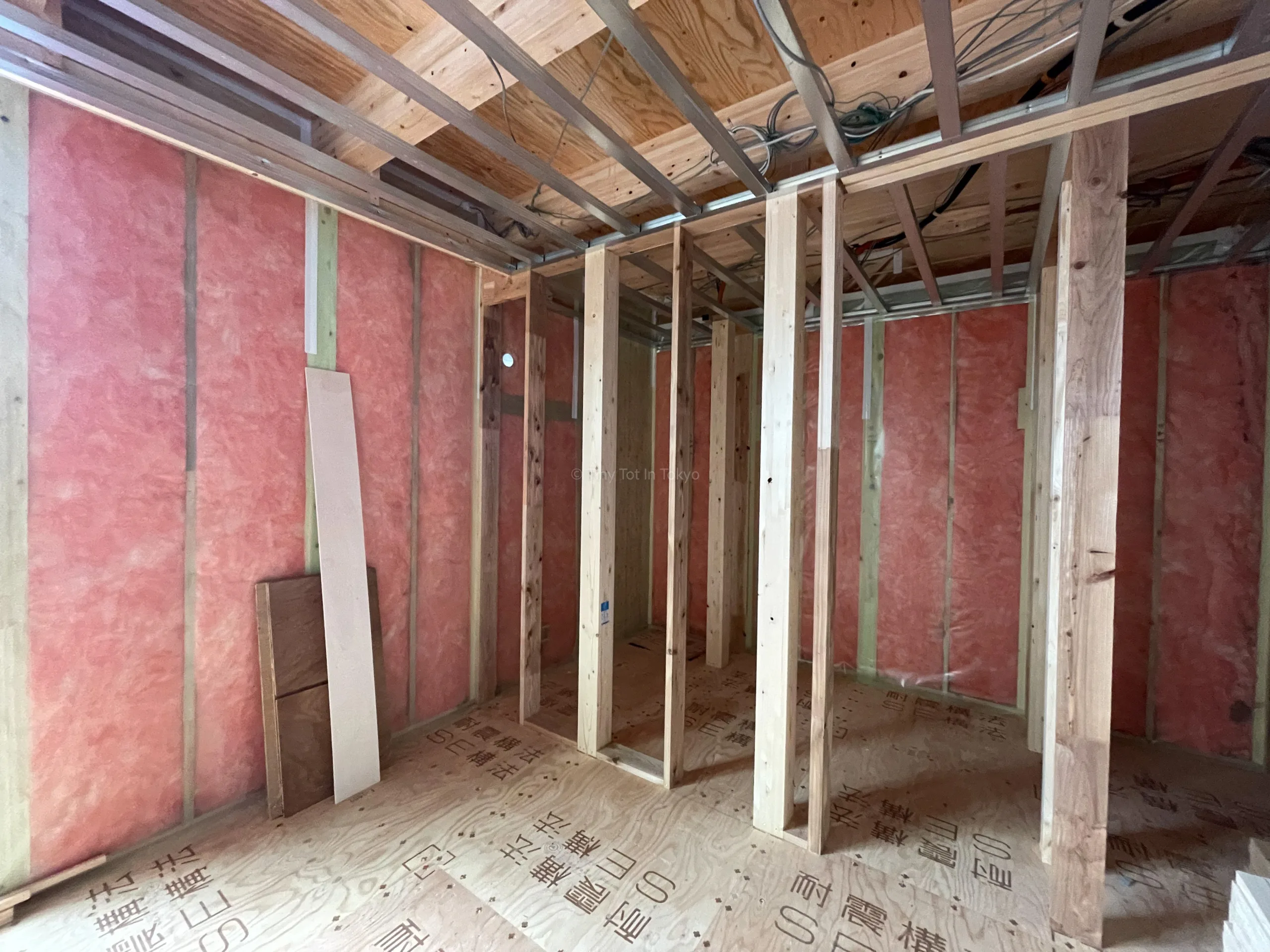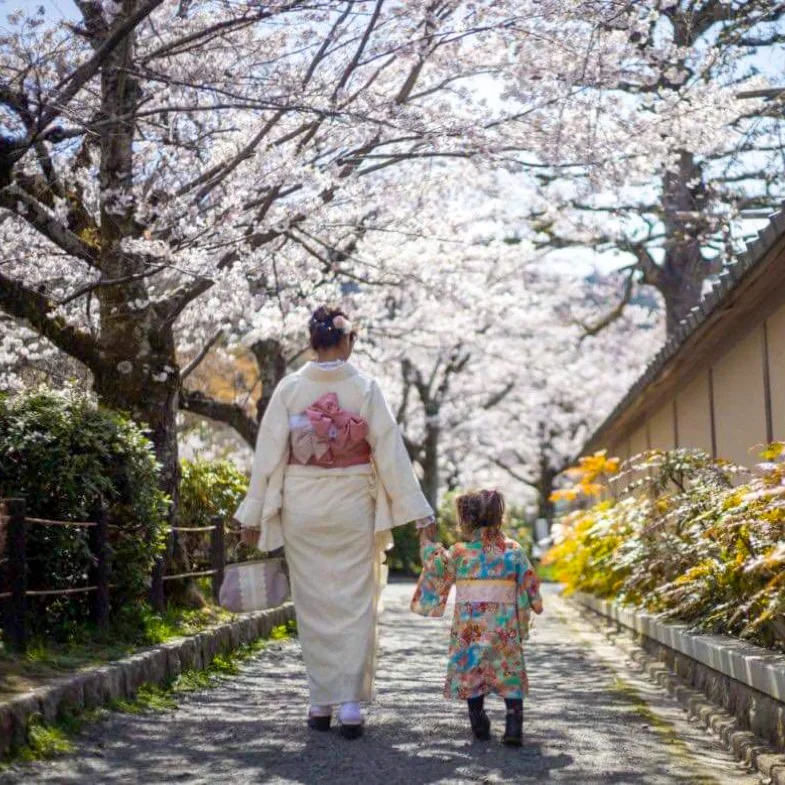A lot of things are intimidating when it comes to living in another country and building a house is one of them.
We finished building our house in June last year, so I thought I would share what the process was like for those who are interested.
Note that everyone has different experiences, especially depending on how you choose to build your house. For instance, if you go with a large housing developer or a local architect or contractor. I go into detail about choosing who to build your house in my article on buying land to build a house in Japan so make sure to give it a read!
I also recommend the Building and renovating a house in Japan Facebook group for those who want a more varied perspective on what it’s like to build (or renovate) a house in Japan as a foreigner. It’s really interesting to see the different types of homes that are built and I wish I had known about this group sooner!
Contents
- Meetings to Plan the Build of the House
- House Design Ideas in Japan
- Designing the Interior of a House in Japan
- Time to Build the House
- Checking the Finished House
- Almost One Year of Living in the House – Good Points and Possible Regrets?
- Solar Panels for a House in Japan
- Wrap-Up: Building a House in Japan
Meetings to Plan the Build of the House
This is a no-brainer. There will be meetings, and depending on the company building your house, the number of meetings may vary. For instance, large housing developers might limit you to a certain number of meetings over the course of three months.
We had 14 meetings with our local contractor (Company T), so around every one or two weeks for six months. We could have taken more time but that meant delaying construction, which we didn’t want to do. And honestly, I was so tired of looking at samples for things like wallpaper and flooring that I just wanted it over with!
With some large housing developers, one reason why three months is enough time is that you’re limited in terms of what you can choose for layouts, kitchens, flooring, wallpaper, and so forth. But in our case, we were able to choose freely anything we wanted for our house. This was both a blessing and a curse.
I loved the freedom and being able to choose my dream island kitchen (within our budget) but we spent so much time looking at samples. I am also indecisive, which didn’t help.
During our meetings with Company T, we planned the floor plan with the architect and then worked on how the inside would look like (flooring, cupboards, lighting) with the interior coordinator. After every meeting, we got updated floor plans as well as 3D mockups.
The floor plan was decided quite quickly. The architect gave us two plans and I ended up taking one of them and almost completely redoing it to suit our needs.
Now, I have thought a lot about this and I am not going to share the floor plan of the house, mainly because it is my baby, and much like my actual baby, I just prefer to keep it out of the public eye. But I will share that there is an indoor balcony in the middle of the LDK. My plan is to make it like an inner garden (中庭, nakaniwa) but at the moment there’s only patio furniture and an olive tree.
Our house is a unique design that has gotten us lots of compliments but I don’t think it’s for everyone. For us, though, it’s perfect. One thing I especially love about it is that there’s a glass door separating the dining room from the living room, so I can block out cooking smells if I’m making something like curry. I can also still see into the living room from the kitchen and vice versa. (We got a robot window cleaner to help with all the windows!)
However! I do wish I had asked for more layout options. I’ve thought about this for months and don’t know the right answer, and maybe other people who have built their houses feel the same way.
For instance, I sometimes think that it would have been nice to have a walk-in shoe closet/cloak for the space. But then it would have been more expensive, and the one we have right now is quite convenient when it comes to getting things. I also wish our entrance was bigger but again, that would cost more money. And if I could be super greedy, I would also want a storage closet. Right now we have a loft, which is fine but it’s annoying to go up and down the ladder to get things.
So when it comes to having everything we need, I think we did a great job overall, and the architect and interior designer also helped us design a practical yet stylish home.
House Design Ideas in Japan
When it comes to deciding what your house will look like, there are tons of resources. As mentioned earlier, some people share their house plans and finished products on Facebook. Reddit is a good resource, too, specifically r/InteriorDesign.
You can also refer to architectural magazines and Instagram. I did a bit of both, but to be honest, I found a lot of the houses on Instagram looked the same and the trend at the time (maybe it’s still trending now?) wasn’t for us. Despite this, I still recommend following the_room_tour on Instagram for some inspo.
For magazines, Modern Living is a nice option (you can get a one-month free trial of unlimited magazines, including English ones, on Rakuten Magazine).
Designing the Interior of a House in Japan
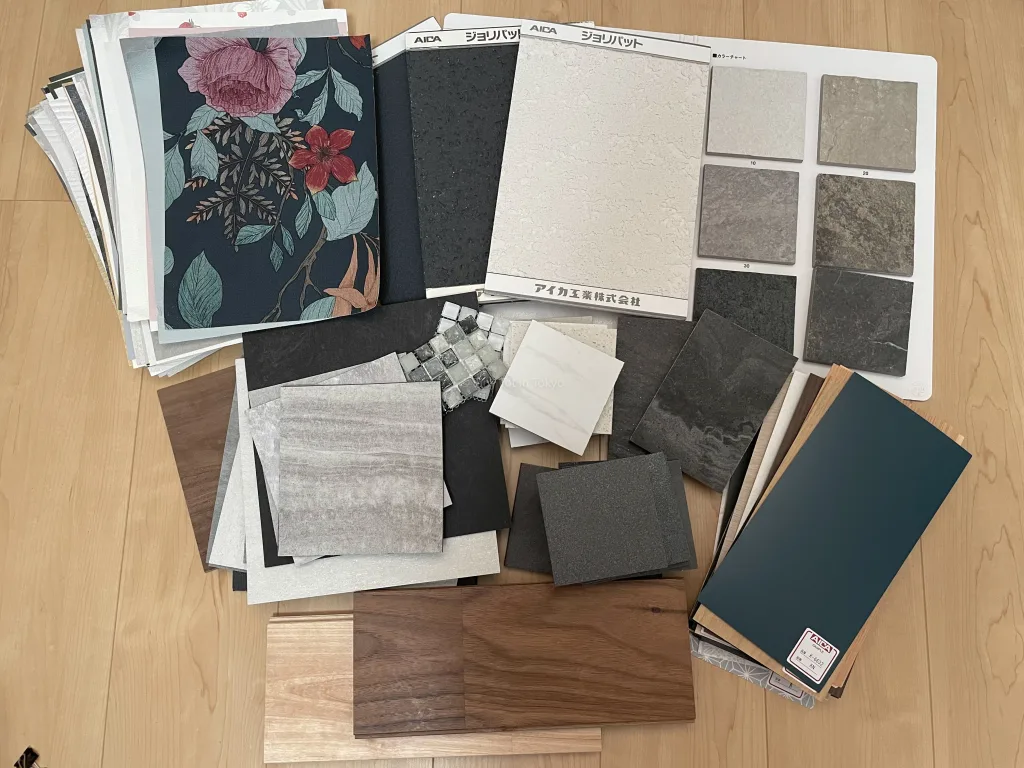
As mentioned earlier, I found the layout to be the easiest part. Deciding on the materials for the inside was another story.
We had to go to so many showrooms. For instance:
Wallpaper (壁紙, kabegami)
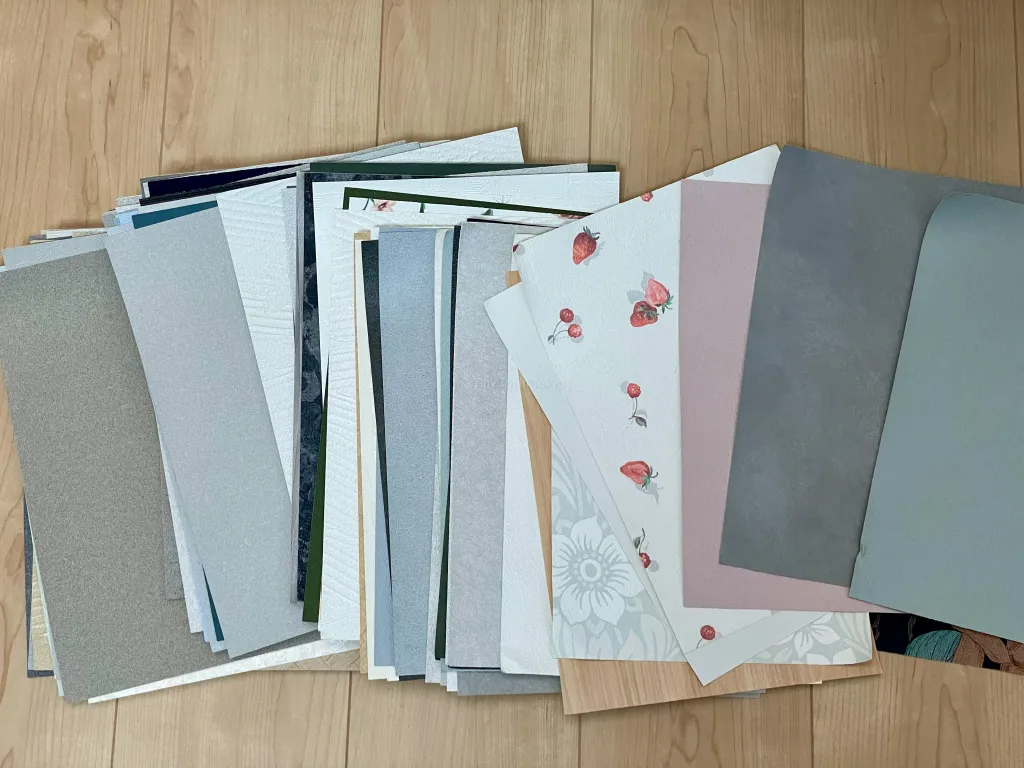
Flooring and Cupboard Material
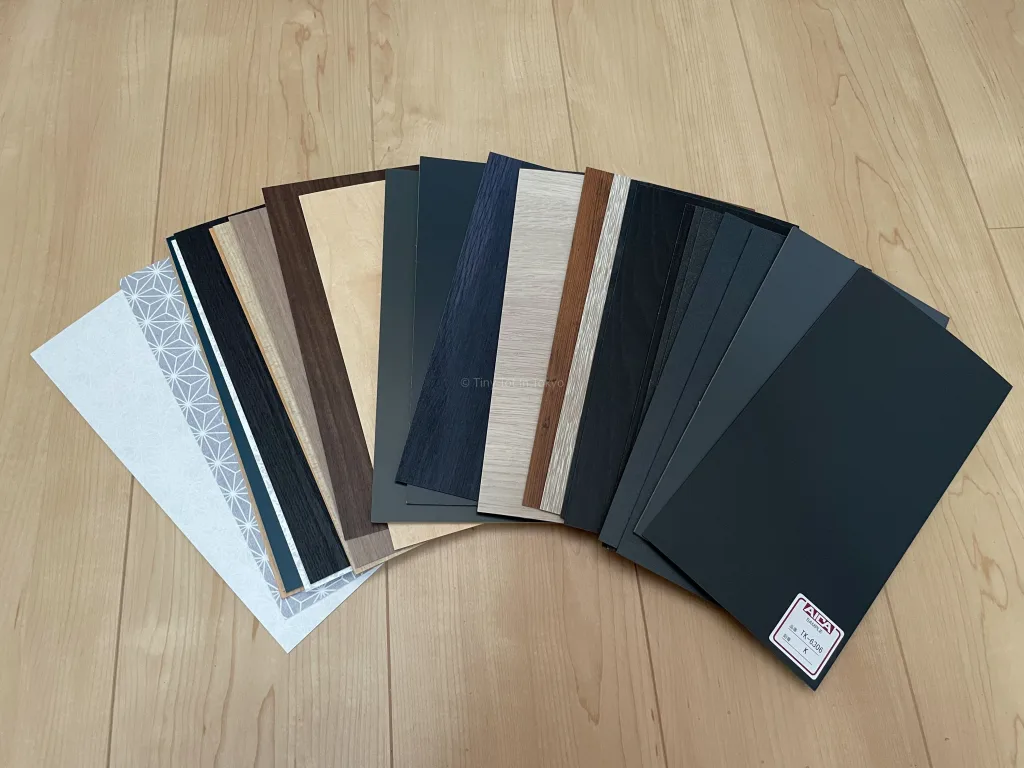
For tips, I recommend seeing how much fingerprint transfer there is when choosing cupboard material. I initially wanted deep blue-green cupboards for the kitchen but my fingerprints showed up on the material immediately, and I didn’t want to spend all my time trying to wipe those prints away.
Also, try to search the number for each sample online and on Instagram. You might find that other people have posted pictures of how it looks in their home.
Note that when it comes to flooring, tile might be cold. We have tile in the kitchen and it’s definitely colder than our hardwood floors in the rest of the house. If you want to put tile in the living room, you might need to get floor heating (床暖房) or have a rug. But know that with floor heating comes the cost of upkeep and the cost to use it as well. We had floor heating in our previous house and we never used it, but we also wear slippers.
Kitchens (キッチンメーカー)
Stylish kitchens with stoves with triple burners in a row. You can also get a large dishwasher, similar to Bosch and Miele, if you go with a kitchen from this company.
Affordable and cupboards have large storage capacity. The range hood also doesn’t need to be cleaned very often.
Affordable and known for its versatility as well as enamel kitchen panels, which are easy to clean.
Known for stylish kitchens. Their sink has a feature that allows for easy drainage and their faucets can be turned on and off with a single touch. The faucet also has a large spraying range that helps with removing food from dishes yet saves water.
Known for stainless steel, easy-to-clean kitchens.
Known for stylish kitchens.
Unit Baths
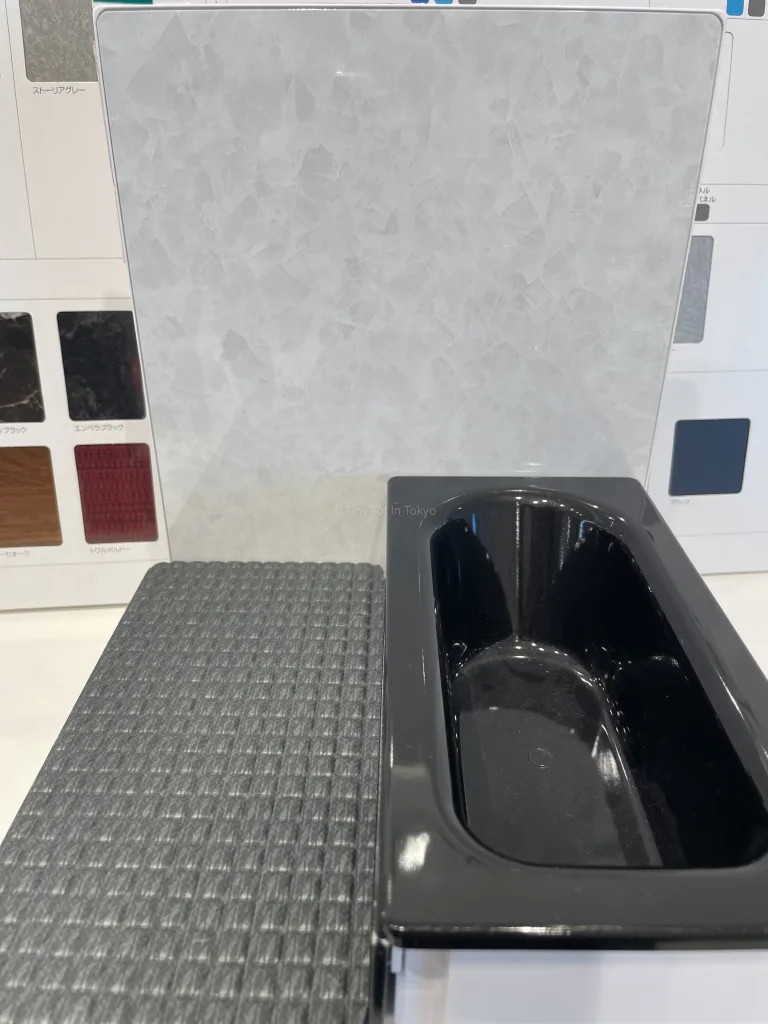
TOTO had these cute little diorama where we could mix-and-match colors and types of flooring, baths, and walls to see what it would look like. (We didn’t go with the one pictured above.)
Toilets
House Exterior Material (外壁材, gaihekizai)
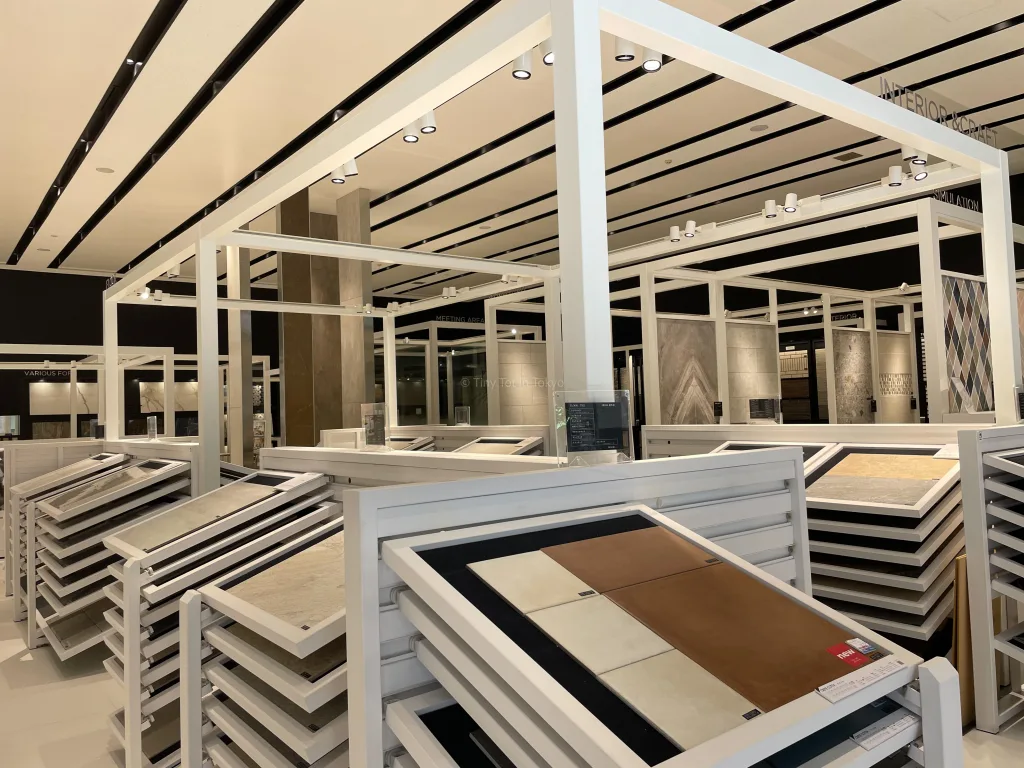
There’s likely more out there, especially if you live in Tokyo, but this was what we had close by. Most of these places are in Umeda, Osaka, thankfully, so we didn’t have to travel too far.
I spent so much time going to showrooms and getting sample after sample after sample. We still have a huge box of them that I keep meaning to give to Company T.
It’s important to note that house-building companies have standard products, meaning that they buy those products in bulk. For instance, a particular bathtub or toilet might be a standard product and bought in bulk, which makes it cheaper.
We tried to stick to standard products as much as possible to help reduce the cost. And when you have endless choices, it’s easy to go over budget when you upgrade to get something nicer. After all, this is (likely) your forever home!
In the end, we went with sangetsu for wallpaper, Takara Standard for the kitchen (the cheapest option that allowed us to use any material for the cupboard, and we went with AICA), and TOTO for the powder room sink, and TOTO for the toilet (neorest).
Our bath and shower are from TOTO. We went with Sazana because of its affordability for its massage jet option for the bath and rainshower. This was also a standard product for Company T.
For the floor, we got a mix of vinyl tile for the toilets and powder room, stone tile for the kitchen, and walnut hardwood flooring from Company T. With the hardwood floor, we tried to look for something that wouldn’t scratch too easily and spent time attacking their samples, which they graciously allowed us to do.
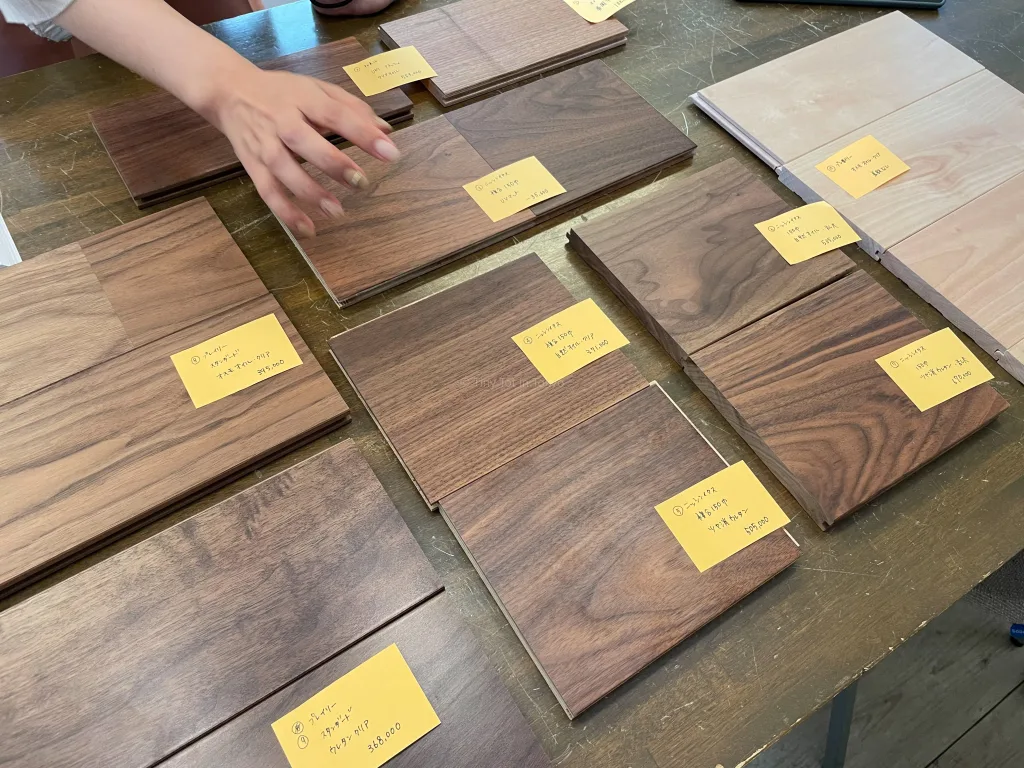
We also got an oven from AEG and a dishwasher from Bosch, both of which I am very happy with.
Other things we had to decide on were lighting (we did a lot of recessed fixtures), light switches (we went with Panasonic), and outlets. Outlets are incredibly important and one piece of advice I kept encountering was to have more outlets than you think you need. My husband and I tried to keep that in mind and yet! We wished we had two more outlets, in particular one in a niche. I remember thinking it would look ugly but I should have been more practical about that.
Our house is very much practicality over appearance, and although I was blown away by how gorgeous our neighbors’ homes are, I think we built the right house for us. I feel super comfortable in it and I know if we had followed what was trending, it wouldn’t feel like our house.
(Now, I will admit that if I didn’t have to balance everything with my husband’s tastes, my kitchen cupboards would be pink. But black does appease the dark side of me!)
In terms of cost, the house did end up going over budget. We made sure to have some leeway beforehand so make sure you budget extra just in case, especially if you want a dream home!
Time to Build the House
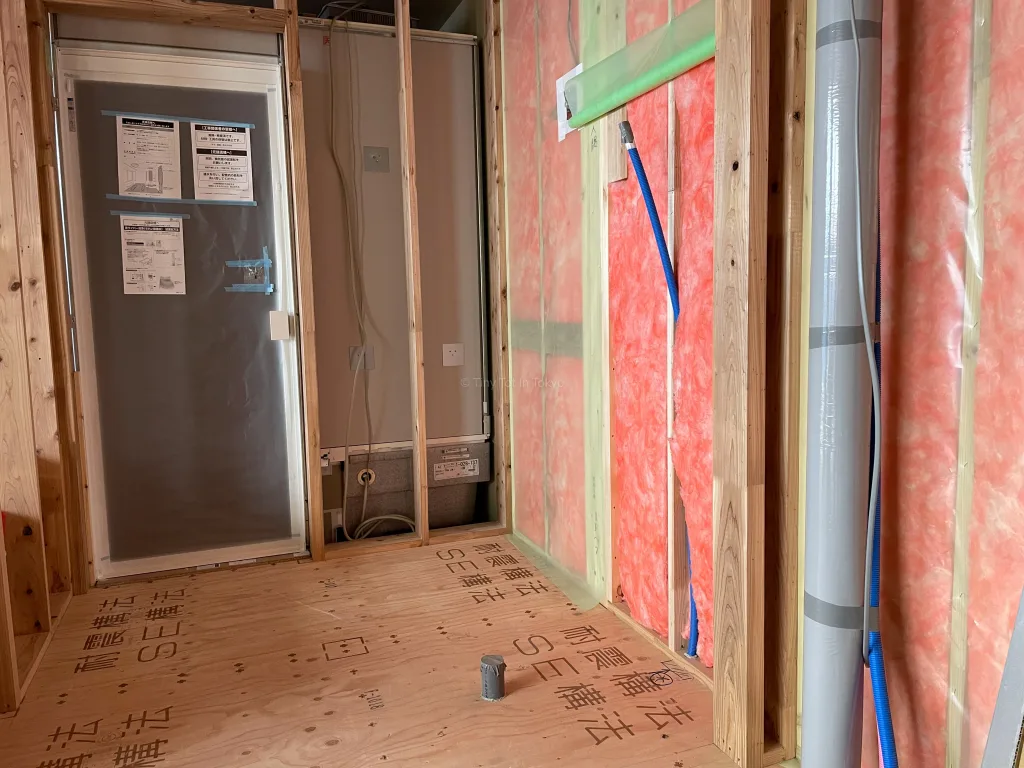
After we had our Jichinsai, construction on the house began. We were given a detailed timeline on exactly when each part of the house would be constructed and when they expected it to be finished.
Of course, factors such as long rainy periods would delay things but we were surprised when the house was finished about a week ahead of schedule!
Overall, it took six months for them to build the house, and one really exciting thing was seeing the scaffolding go up in less than a day!
We were able to pop in anytime we wanted to see how construction was going, and we made sure to bring bottled tea for the construction workers whenever we showed up.
We lived nearby, thankfully, so this was possible but for those who live far away from their new home, you’ll be likely sent photos updating you on the building process.
Checking the Finished House
When the house was done, we had to check to make sure everything was okay and nothing needed to be fixed. This took a few hours with the architect, salesperson, and interior coordinator helping us as well. Every time we found a nick or something that needed to be fixed, we would place a bit of colored tape on it.
Everything was fixed quite quickly (mainly wallpaper issues) and once we were happy, the house was handed over and we moved it!
(If you’re wondering which moving company we used, we chose sakai (サカイ) because they offered us the best deal after we got quotes from different companies and shared the quotes with others.)
Almost One Year of Living in the House – Good Points and Possible Regrets?
Overall, my family is very happy with the new house. The kitchen is a dream and the living room is so comfortable. I love having an office that doubles as a guest room and our bedroom is spacious.
Having an indoor balcony is also really nice to relax or entertain guests, although we didn’t expect so many hornets (this is what we get for living near a mountain!).
As I mentioned in my article on buying land, one key reason we chose our Company T to build our house was because of their insulated houses, with an insulation grade of 6 and triple-pane windows. After spending a winter in our new house, I can say that this was an excellent decision. We rarely use more than one air conditioner to heat up the house.
However, since we have large windows and unfiltered sunlight, it can get very warm in summer, so we ended up installing an air conditioner in the kitchen (which is on the second floor) for hot days.
For those of you wondering if it’s a pain having the LDK on the 2nd floor, at the moment we haven’t had any problems. If things get too difficult when we’re old and grey, we will likely install an elevator or put a small kitchen on the first floor.
In terms of features that we really like in the house, here’s a brief overview:
- Touchless automatic faucets
- Hot water in the toilet sink faucets
- Automated outdoor blinds for the living room
- Retractable clothesline
- Foldable counter for the powder room (for our clothes when we take a shower)
- Sliding doors (saves space and we don’t have to worry about opening doors on anyone)
- 2nd floor LDK with the bedrooms and shower on the 1st floor
- Having a sink (powder room) next to the entrance
- Panasonic intercom that allows us to lock and open the front door from the second floor with the push of a button
- Bosch dishwasher
- AEG oven
- TOTO neorest toilet
- Paying a landscaper to do the front and back gardens of the house (we have a Japanese garden in the back)
After almost a year of living here, I also have a better idea about things I might have wanted to change. However, all of these would have required more space and increased the cost of the house, which is why I am okay with how the house turned out.
2nd-floor toilet
This is right in between the kitchen and living room. Very practical but you can hear a bit too much sometimes. I would have moved it to a lower-traffic location but I don’t know where it could have gone!
Storage room
As mentioned earlier, I would have liked a storage room rather than a loft. But our house is already a 4LDK, do we really need a 5th room to store things?
Bigger walk-in pantry
My neighbors also have a huge walk-in pantry and I have pantry envy because ours is a baby in comparison. But we have enough storage space, it’s more of an aesthetics thing because it looks nice.
Walk-in shoe closet/cloak in the entryway
Having room for more coats and other outdoor items would be nicer. But we did put a shed in the yard for my daughter’s outdoor goods like sand toys and her pool.
More outlets
As I mentioned before, we didn’t realize we needed two more outlets in certain areas. It’s hard to know until you live there!
Maybe in the future, it’ll be easier to design houses because, despite the 3D designs we got, we still had no idea what it would be like to actually live in a place and experience what it’s like.
Are 4D models a thing yet?
Solar Panels for a House in Japan
We decided to get solar panels and so far we’re happy with the decision. However, it took a while for the solar panels to be approved by the government, specifically 4 months after the house was built. We believe this is because of all the subsidies the government was giving out at the time that caused a backlog.
We also bought an EV, so instead of batteries, we are planning to provide electricity to the house at night using the car’s battery. However, this also has taken time because we are waiting for a device that will allow us to do this. (We should get it in the fall.)
With our solar panels, we save about 15,000 yen a month, but of course, it depends on factors like the weather. It’s been quite rainy and cloudy lately so we will see in the summer.
The solar panels from Canadian Solar cost about 1.5 million yen, so overall, we think it was a good investment.
I’ll have a more detailed write-up later after we have used the solar panels for a year.
Wrap-Up: Building a House in Japan
I hope this look at my experience building a house in Japan has been helpful. The process was long but it was absolutely worth it as there is no house similar to my family’s.
I will admit that at times I wondered whether we made the right decision with the design, especially in the beginning, but now that almost a year has passed, I know that following our gut was the right decision. We built the house to be practical, especially after living in two not-so-practical homes, and it is exactly that.
Thanks for reading, and please let me know if you have any further questions and I’ll make sure to answer them!

